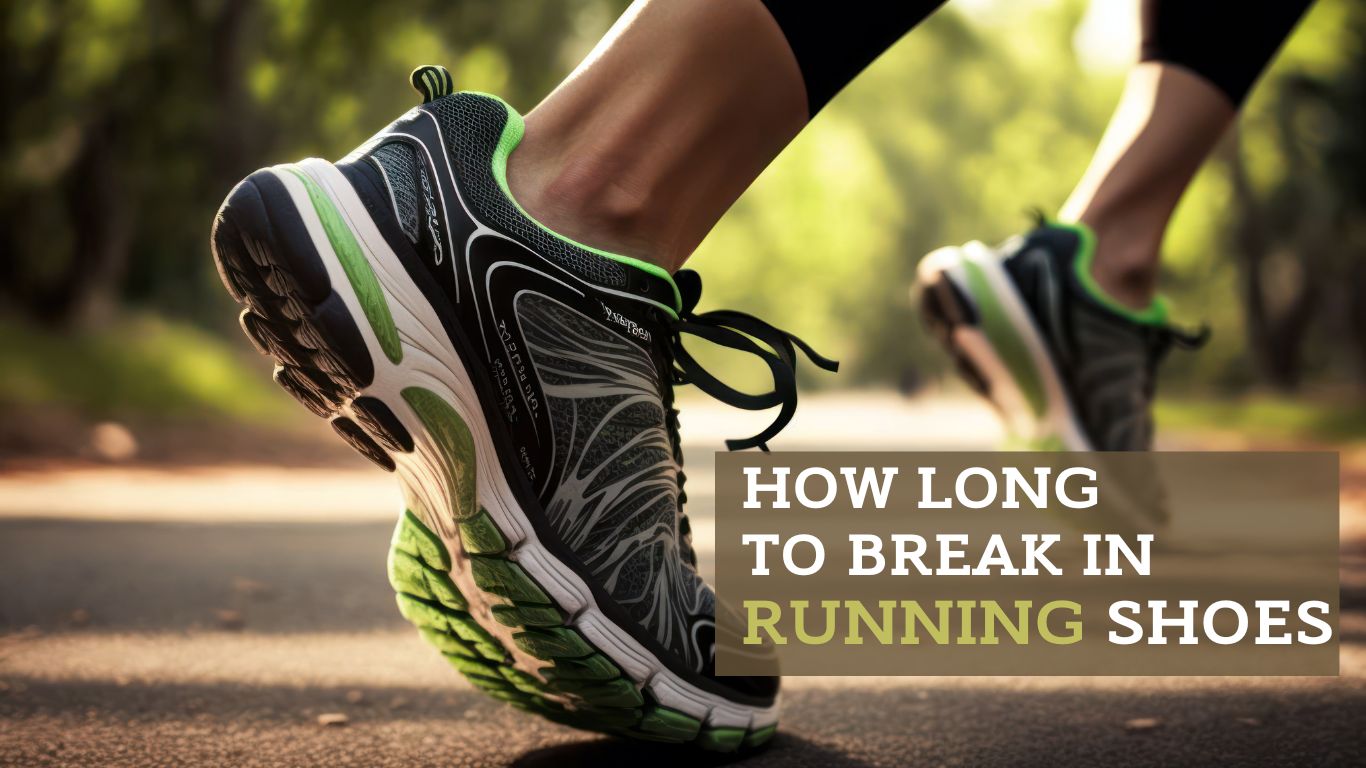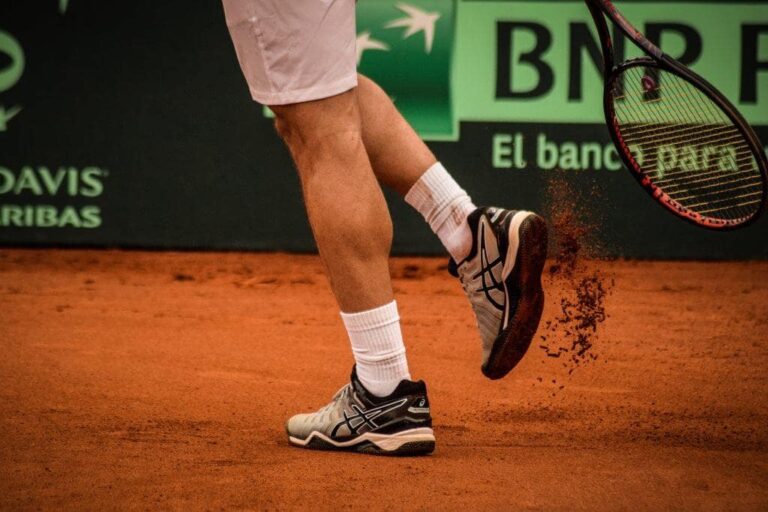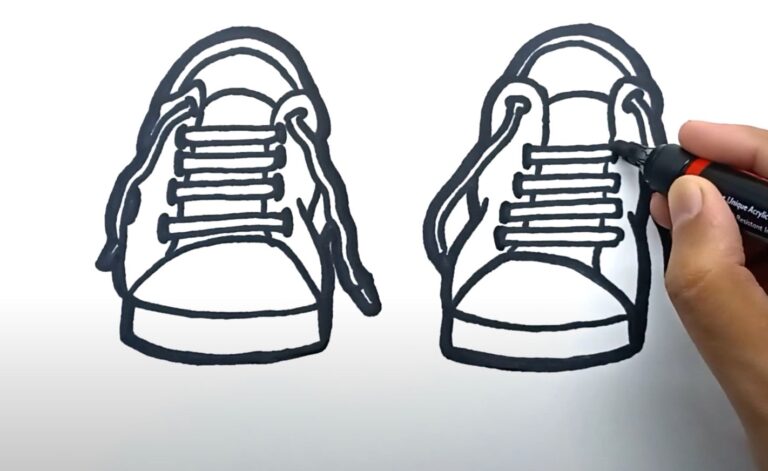HOW LONG TO BREAK IN RUNNING SHOES?
Breaking in your running shoes so they are comfortable and supportive can make all the difference in a great run. With new technology coming out every few months, it seems like finding the perfect shoe isn’t always easy–and breaking them in before taking them on a long run adds another step to the process. While many runners have their own ways of quickly getting used to new kicks, some don’t know where to start when it comes to this important step in achieving performance goals. Luckily for you, we’re here with everything you need to know about how long it takes to break-in your running shoes!
Choose the right running shoes for your needs
Choosing the right running shoes for your workout is essential; without them, you may not experience the same level of performance, stamina and comfort that a quality pair can provide. It can be confusing to know which shoes are best for you, but it’s important to consider the type of running surface you will be on most often (i.e. pavement, grass, gravel or sand) as well as your individual gait and arch height when selecting a shoe. Taking these factors (and any other relevant ones) into consideration during your buying process will help ensure that you get the most out of your training sessions by allowing you to perform safely, comfortably and efficiently. Ultimately, having the right pair of socks on your feet is invaluable in order to avoid any possible injuries and maximize performance.
Consider the type of running surface and activity you’ll be doing
When you’re running, it’s essential to identify the type of surface you’ll be running on and the activity you’re planning. Different surfaces require different levels of support and protection, depending on the activity. So, for instance, if you’re a long distance runner who plans to run on asphalt or concrete for marathon training, investing in a pair of shoes designed for that type of terrain could help reduce impact and improve your performance. If you’re someone who likes to take it slow with a leisurely jog around the neighborhood park, however, comfortable walking shoes may suffice. Regardless of what type of running surface and activity you choose, make sure your shoes provide adequate cushioning and arch support; otherwise you risk taxing an already overworked cardiovascular system.
Plan to break in your shoes by wearing them for shorter distances at first
Wearing shoes that are still stiff from the box can be uncomfortable and potentially damaging to one’s feet. To help break them in, it is a good idea to start by wearing them for shorter distances and gradually going further. This will give your feet and the shoes an opportunity to become comfortable with each other, preventing blisters or other injuries. With proper care, your new shoes will soon become a beloved pair you can rely on to provide comfort while walking around or undergoing more intensive activities.
Take into account how much cushioning and support the shoe offers
If you’re an active person who loves to work out, it pays to put a bit of thought into the shoes you buy. Quality construction and cushioning are essential for providing good support and preventing injury. Determining how much cushioning and support your shoe offers can be tricky though- too much cushion might leave you feeling disconnected from the ground, too little means that your feet don’t get enough of a break from the impact of pounding the pavement or gym floor. The best way to find out is to try several options out in store before making a purchase – don’t forget to bring in any special insoles or orthotic inserts you need when testing!
Understand that taking time to break in shoes properly can help prevent foot pain later
Wearing shoes that haven’t been broken in properly is a sure-fire way to guarantee foot pain! Taking adequate time to break in new shoes does more than just make them look better and last longer—it helps to prevent long-term foot pain from blisters, calluses and other irritations. When buying new shoes, it’s a good idea to wear them around the house or on short walks for a few days before embarking on any extended periods of standing and walking. Doing so will help ensure that your feet –and not your shoes– are the ones that get all the attention, rather than uncomfortable blisters or soreness.
Learn more about different materials and types of running shoes to make sure you choose the best one for you
When it comes to running shoes, there’s no one-size-fits-all option. It’s important to do your research and learn more about the different materials and types available. Depending on the surface you plan to run on, look for cushioning and shock absorption qualities that will give you the right support and protection. If you’re a regular runner, make sure the shoe has enough durability for continued use, or consider investing in a few pairs so you can alternate accordingly. With the many options available from various brands and retailers, evaluating your needs and priorities will help you pick the running shoe that’s perfect for your unique situation.
Conclusion
To summarize, choosing the right running shoes for your needs is essential for making sure any running activity you do is safe and comfortable. Whether it’s long distance running, short sprints, or everyday use, consider the type of surface you’ll be running on, plan to break in your shoes with shorter distances, and remember to think about the amount of cushioning and support needed. Taking time to break them in properly can help prevent foot pain down the line and make sure that you get the best out of every stride. By being informed about different materials and types of running shoes that are out there, you can guarantee optimal performance for whatever level of effort you require from these critical pieces of equipment.
FAQs
Q1: How long does it take to break new running shoes?
A: It depends on a few factors, such as the type of running shoes, how often you run, and the terrain you’re running on. Generally speaking, it can take anywhere from a few weeks to several months for new running shoes to break in.
For example, if you purchase a pair of lightweight trail running shoes and use them regularly on rough terrain, they may only last a few weeks before they start to show signs of wear and tear. On the other hand, if you buy a pair of road running shoes and use them mainly on flat surfaces like sidewalks or roads, they may last several months before they need replacing.
The best way to ensure that your new running shoes last as long as possible is to take good care of them by cleaning them after each use and storing them properly when not in use. Additionally, alternating between two pairs of running shoes can help extend their life since it gives each pair time to recover between runs.
Q2: Do running shoes need to be broken in?
A: Yes, running shoes do need to be broken in. This is because running shoes are designed to fit the shape of your foot and provide cushioning and support for long distance runs. When you first purchase them, they may feel stiff or uncomfortable, but after a few runs they should start to feel more comfortable. Breaking in your shoes also helps them last longer as it allows the material to stretch and form around your foot. To break in your shoes, try wearing them around the house for a few days before taking them out on a run. This will help get rid of any stiffness so that when you go out for a run, you don’t experience any discomfort or pain.
Q3: How many miles do you have to break in a running shoe?
A: The amount of miles you should break in a running shoe varies depending on the type of shoe and how often you plan on wearing them. Generally, it is recommended that you run no more than 10-20 miles in a new pair of running shoes before replacing them. This allows the shoe to conform to your foot shape and provide the necessary cushioning and support for your runs.
It is also important to note that if you are an avid runner, you may need to replace your shoes more frequently than someone who only runs occasionally. As a general rule, it is best to replace running shoes every 300-500 miles, or about once every 6 months. If you notice any signs of wear or tear on your shoes, such as holes in the sole or fraying fabric, then it is time to invest in a new pair.
Finally, when breaking in a new pair of running shoes, it is important to take it slow and gradually increase mileage over time.
Q4: Do running shoes hurt at first?
A: Yes, running shoes can hurt at first. This is because they are often stiffer and more supportive than everyday shoes, which can cause discomfort in the heel and arch of the foot. Additionally, running shoes may not be broken in yet, so they may feel tight or rub against certain areas of the foot.
However, this discomfort should go away with time as your feet get used to the new shoes. To minimize any painful sensations, make sure you choose a pair of running shoes that fit your feet properly and provide adequate cushioning and support for your specific running needs. It is also important to break in new running shoes gradually by wearing them for short periods of time before going on longer runs.







